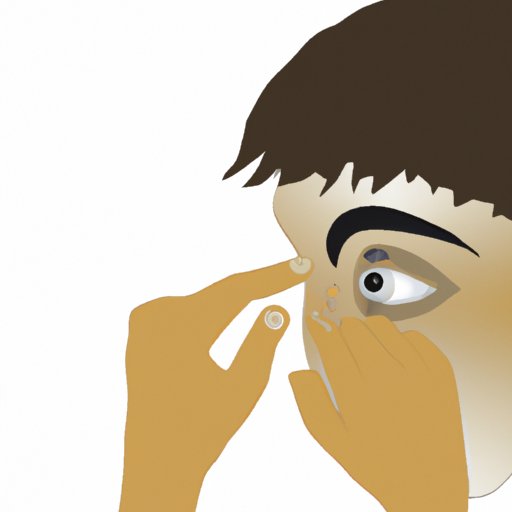
I. Introduction
Styes are a common eye condition that can cause discomfort and irritation. As such, it’s important to understand the causes, symptoms, treatment, and prevention techniques for styes. This article aims to provide a comprehensive guide to help you understand everything you need to know about styes.
II. Causes of Styes: A Comprehensive Guide
Stye, also known as hordeolum, is an infection of the eyelid that causes a bump along the eyelash line or in the inner part of the eyelid. The cause of styes is usually a bacterial infection that develops at the base of the eyelash due to clogged oil glands that trap debris and bacteria. Hormones, poor hygiene practices, stress, and diseases such as diabetes can also be contributing factors to stye formation. In some cases, eye makeup or contact lenses can also cause styes.
III. The Science behind Styes: What’s Happening to Your Eye?
The eye is a delicate organ that is composed of several parts, including the eyelid, conjunctiva, and cornea. When a stye develops, the eyelid’s small oil glands called meibomian glands become infected, causing a painful swelling. The infection triggers the immune response, leading to inflammation, a common symptom of styes.
IV. Styes: Symptoms, Treatment, and Prevention
The most noticeable symptom of a stye is a red, swollen bump that appears on the eyelid. Some styes may also cause itching, tearing, and a sensation of grittiness in the eye. While most styes will heal on their own within a few days, they can be uncomfortable. Eyedrops, warm compresses, antibiotics, and pain medication can all help treat the symptoms of styes. Prevention tips include maintaining high levels of personal hygiene, avoiding makeup that has expired, and avoiding contact lenses when suffering from a stye.
V. How to Avoid Styes: Tips and Tricks
Preventing styes can be as simple as practicing good hygiene habits, including washing your hands regularly and ensuring that your makeup is always clean and fresh. Implementing lifestyle changes such as eating a balanced diet rich in vitamins and minerals and avoiding stress can also help prevent styes. Proper makeup removal, regular cleaning of contact lenses and storage containers, and replacing contact lenses according to the prescribed schedule can also help you avoid styes.
VI. From Makeup to Contacts: The Habits that Cause Styes and how to Avoid Them
Your makeup routine can also be a contributing factor to styes. Old or dirty makeup can harbor bacteria, which can infect the meibomian glands in your eyelids. Proper makeup habits such as throwing out old products and cleaning your brushes regularly can help prevent styes. When it comes to contact lenses, proper hygiene practices, such as washing your hands before inserting or removing contact lenses, can help prevent styes. Avoid wearing contact lenses while suffering from a stye, as this can spread the infection to other parts of the eye.
VII. When to Seek Medical Attention for Styes
While most styes will clear up on their own, there are cases where styes can lead to complications such as vision problems or recurring infections. If your stye does not improve after a few days or is causing significant pain, you should consult a doctor. If you experience additional symptoms, such as fever or vision loss, seek medical attention immediately. Your doctor may recommend antibiotics or surgical intervention to treat the stye.
VIII. The Myth-busting Guide to Treating Styes at Home
There are several misconceptions associated with treating styes at home, such as using tea bags or gold rings. While some home remedies may help alleviate the symptoms of styes, such as warm compresses and cleaning the affected area, they do not cure the underlying infection. Antibiotics, prescribed by a doctor, can help reduce the length and severity of the stye and help control future outbreaks.
IX. Conclusion
Styes can be a nuisance, but by practicing good hygiene habits, maintaining a healthy diet and lifestyle, and seeking medical attention when necessary, you can prevent and treat styes. Remember to avoid makeup or contact lens-related habits that can lead to a stye and practice good hygiene habits such as washing your hands frequently and cleaning your equipment regularly. With the right habits and care, you can protect your eyes from styes and maintain optimal eye health.




